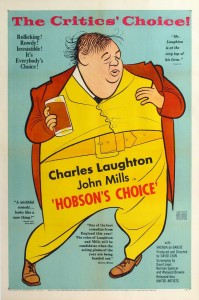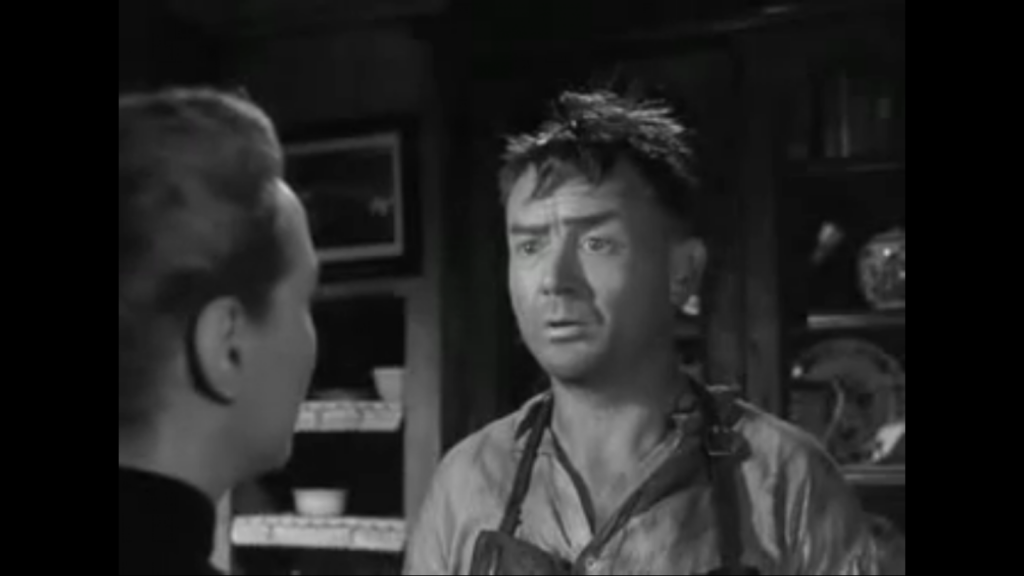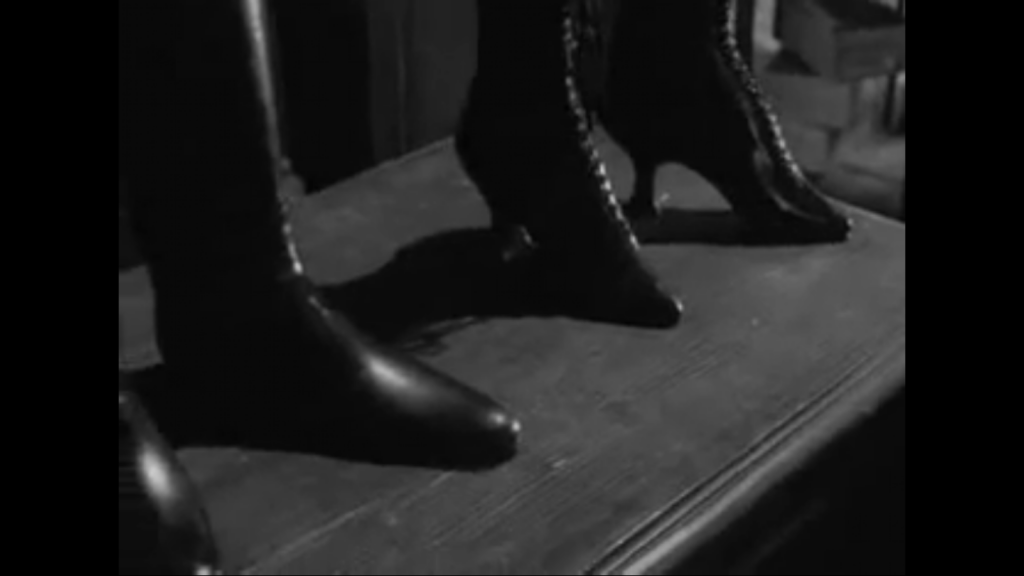Hobson’s Choice (1954)
“My brain and your hands will make a working partnership!”
|
Synopsis: |
|
Genres, Themes, Actors, and Directors:
Review: The storyline centers on Hobson’s delicious come-uppance — with the title itself ultimately referring to the fact that Hobson really has no choice in mending his ways. Interestingly, while he’s the clear antagonist of the story, we can’t help feeling a bit of compassion for him, given how inevitable his downfall is — and how clueless he is about its coming. Meanwhile, de Banzie’s Maggie makes for a most unlikely protagonist, but that’s precisely the point: from the very beginning, she’s posited (by Laughton) as someone too old and too plain to marry or make anything more of her life than what she has; she spends the rest of the storyline proving him wrong. It helps that de Banzie herself is a somewhat unknown cinematic face: her only other notable (supporting) film roles were as a female baddie in Hitchcock’s second version of The Man Who Knew Too Much (1956), and as Laurence Olivier’s wife in The Entertainer (1960). This makes her emergence as an unexpectedly strong force-to-be-reckoned-with all the more pleasantly surprising. Peary nominates Laughton as one of the Best Actors of the Year for his work in this film, and it does remain one among many of his impeccable performances; no one was better at embodying grotesque disdain than Laughton. John Mills is equally delightful (if unexpectedly cast) in the pivotal role as Willie Mossop, a gifted yet intellectually challenged shoemaker who slowly comes into his own as a man of means. Every scene he’s in is delightful, but my favorite is probably the one showcasing the moments before and after his wedding night (with the night itself, naturally, cut out); with help from Lean, Mills masterfully conveys everything we need to know about this critical facet of his shifting relationship with de Banzie. Also worth pointing out is Malcolm Arnold’s instantly hummable score, which seems as much a part of the film experience as the visuals and storyline. This one is a true delight, and should be seen by all film fanatics at least once. Redeeming Qualities and Moments:
Must See? Categories
Links: |






One thought on “Hobson’s Choice (1954)”
First viewing. A once-must, as a feminist film, and for the performances – esp. de Banzie.
I will admit outright to not being a major fan of David Lean films. There are some exceptions (most notably, ‘Brief Encounter’). It’s no secret that Lean was known for being quite the perfectionist. That, in itself, is not a bad thing. After all, who wants a film to be shoddy-looking? But sometimes, with a perfectionist, the result can be a film that (to me, anyway) seems to have trouble breathing – because it has been so controlled.
That’s my overall feeling about ‘Hobson’s Choice’. It’s certainly not a bad film. ~even though it’s not all that complicated a film, and it’s not all that hard seeing, more or less, where the film is going to go once it starts. But it doesn’t seem all that inviting a film, either (not to me).
As a production, it’s admirably shot – esp. the outdoor sequences. But the music, for example, is a bit much; seemingly hell-bent on reminding us how ‘cute’ the movie is.
Of the major performances: Laughton does what Laughton does best here, but he’s saddled with something of a one-note role so it’s difficult for the actor to find color in it. And even though John Mills has a progression in his character, that progression seems too much too unbelievably soon. He goes from one extreme to another and I had trouble buying into that.
However, de Banzie gets to claim most of the film, and that’s a relief. Given a more interesting arc to play, it’s more fun watching how she makes her way through the film.
I also find the film’s structure a little jarring – esp. at the time we reach the ‘wedding night sequence’. Frankly, I thought the film was ending at that point – and would have been rather pleased with that. But…even though the major conflict is resolved…there is still the little matter of ‘what to do with dad’, so we get about a half-hour more. Myself, I find the added stretch somewhat anti-climactic.